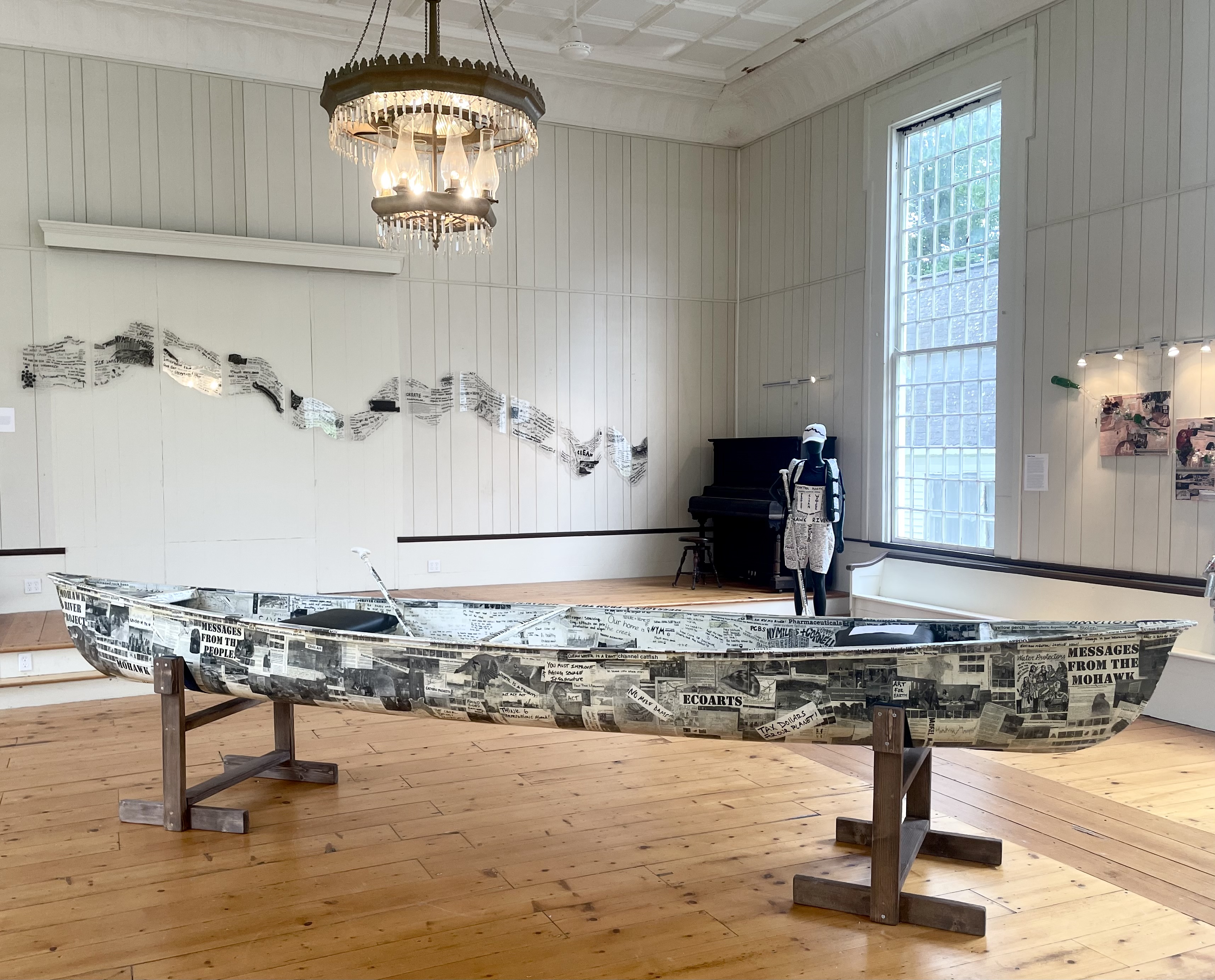Teionontatátie, “a river flowing through a mountain,” was once the dominant means of travel and fishing by the Haudenosaunee people. Named after the Mohawk tribe, the river flows from Rome, NY east to the Hudson. The Mohawk is one of the most modified rivers in the United States. In 149 miles, it has a freeway on one side, a railroad on the other, nine moveable dams, five permanent dams, and five hydropower plants affecting its flow and depth. It was altered to accommodate the Erie Canal, which upon completion soon became obsolete with the advent of the railroad. The canal is now viewed by some as a superhighway for invasive species and a “billon-dollar-a-year gift to yacht owners” (anonymous). This river has been incredibly polluted by industrial waste, abundant raw sewage overspills, nitrogen, and road salt and serves as the muse for this body of artwork.
This project was made possible by a grant from the NY Water Resources Institute and inspired by their Mohawk River Basin Action Agenda put in place to restore and conserve the river. This inspired Davidson to create a class titled “The Art and Science of the Mohawk River” during which she and her students traveled to various communities soliciting their concerns, hopes, data, and other messages about their watershed intended for the eyes of lawmakers. Included are messages from middle schoolers from the Mohawk River Watershed Youth Climate Summit, Indigenous people of the Mohawk River Valley, Scientists working on the river, Cornell students, and seventh graders from the Middle School in New York Mills, a town increasingly prone to flooding and deeply affected by hurricane Irene.
As a performative act for environmental justice, on September 15-16th 2024, Davidson canoed these messages down the Mohawk, then the Hudson, finally arriving at the Capitol with the hope that these citizens’ messages will reach lawmakers.
